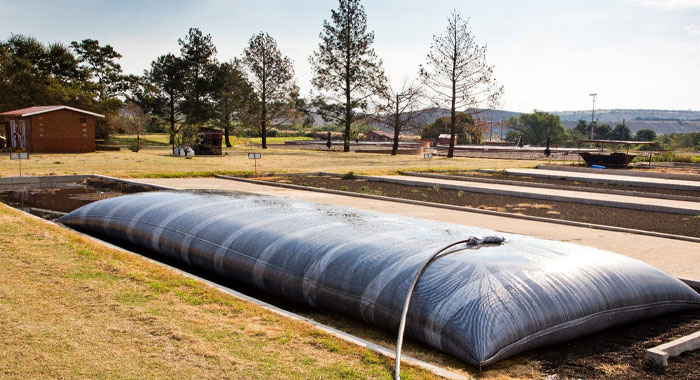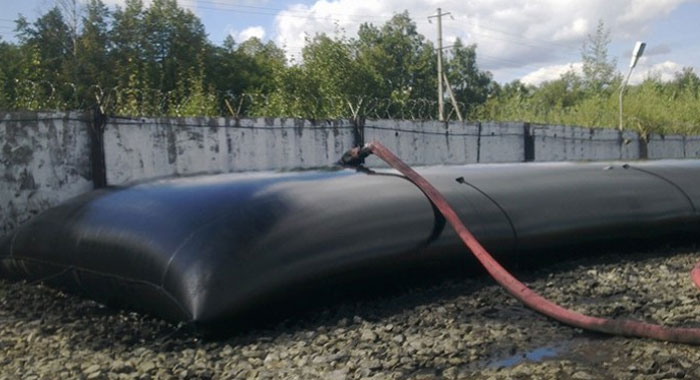
In the realm of environmental management and industrial operations, the need to efficiently handle sediment and sludge is paramount. Enter geotextile dewatering bags, offering a streamlined solution to the challenge of separating water from solids.
These innovative bags, crafted from permeable geotextile fabric, excel in effectively removing water while containing solid particles. From construction sites to wastewater treatment facilities, geotextile dewatering bags are revolutionizing the way industries manage sediment and sludge, providing a cost-effective and environmentally friendly alternative for dewatering needs.
What is dewatering?
Dewatering is the process of removing water from solid material or soil by filtration, centrifugation, or other mechanical means. It is commonly used in construction, mining, and wastewater treatment processes.
In construction, dewatering is often necessary to lower the water table or remove excess groundwater from excavation sites to prevent flooding and stabilize the soil. This can involve the use of pumps, wells, or drainage systems to remove the water.
In mining, dewatering is crucial for maintaining the stability of mine workings and preventing water from infiltrating underground tunnels and shafts.
In wastewater treatment, dewatering is a critical step in the sludge treatment process, where water is removed from the sludge to reduce its volume and make it easier to handle and dispose of. This can be achieved through processes such as centrifugation, filtration, or using drying beds.
Why is the dewatering system important?
The dewatering system is important for several reasons:
- Stability and safety: In construction and mining, excessive water in the soil or rock can compromise the stability of excavation walls, slopes, and underground structures. Dewatering helps to stabilize the site by reducing the water table or groundwater levels, thereby minimizing the risk of collapses, landslides, or other hazards.
- Ground improvement: Dewatering can improve the properties of the soil by reducing its water content. This can enhance the load-bearing capacity of the ground, making it more suitable for construction activities and reducing settlement issues.
- Construction efficiency: Dewatering allows construction projects to proceed more efficiently by keeping excavation sites dry and free from water. This enables contractors to work faster and more safely, reducing delays and increasing productivity.
- Environmental protection: Dewatering helps to prevent groundwater contamination and minimize the impact of construction and mining activities on the surrounding environment. By controlling and managing the discharge of water, dewatering systems can mitigate the spread of pollutants and protect natural ecosystems.
- Compliance with regulations: Many jurisdictions have regulations governing the management of groundwater and surface water during construction, mining, and other industrial activities. Dewatering systems help companies comply with these regulations by controlling water discharges and minimizing their environmental footprint.
- Sludge management: In wastewater treatment plants, dewatering is essential for the effective management of sludge generated during the treatment process. By removing water from the sludge, dewatering reduces its volume, making it easier and more cost-effective to transport, handle, and dispose of.
What is the difference between dewatering and drainage?
Dewatering and drainage are related concepts but serve different purposes:
- Dewatering:
- Dewatering specifically refers to the process of removing water from solid material or soil.
- It is typically used to lower the water table, remove excess groundwater, or eliminate surface water from construction sites, mine workings, or wastewater treatment processes.
- Dewatering methods may include pumping, wellpoint systems, sump pumping, or using specialized equipment to remove water from the ground or from sludge.
- Drainage:
- Drainage involves the removal or redirection of excess water from a specific area or surface.
- It can be used to prevent flooding, manage stormwater runoff, or control water levels in agricultural fields, landscapes, and urban areas.
- Drainage systems typically consist of networks of pipes, channels, ditches, or natural waterways that collect and convey water away from the desired area to prevent saturation or waterlogging.
- Drainage systems can be designed to handle surface water runoff, subsurface water flow, or both, depending on the specific needs and conditions of the site.
What are geotextile dewatering bags?
Geotextile dewatering bags, also known as sediment or sludge bags, are specialized containers made from permeable geotextile fabric designed to effectively dewater and contain solid particles from water or slurry streams. These bags are commonly used in construction, dredging, wastewater treatment, and environmental remediation projects. Here’s how they work and why they are used:
- Dewatering: Geotextile dewatering bags facilitate the separation of water from solids by allowing water to pass through the fabric while retaining solid particles inside. This process is achieved through filtration, where the geotextile fabric acts as a barrier to trap sediment, silt, or sludge particles while allowing water to escape. Over time, as water continues to flow through the bag, the solids accumulate inside, and the dewatered water is discharged.
- Containment: These bags are designed to provide containment for the dewatered solids, preventing them from spreading and causing environmental contamination. The geotextile fabric is strong and durable, capable of retaining even fine particles while allowing water to pass through.
- Versatility: Geotextile dewatering bags come in various sizes and configurations to accommodate different dewatering requirements and site conditions. They can be used for temporary or permanent dewatering applications, depending on the project needs.
- Ease of use: These bags are relatively easy to install and operate, requiring minimal equipment and labor. They can be deployed directly in the water or slurry stream, allowing for on-site dewatering without the need for costly and time-consuming transport of materials to off-site facilities.
- Environmental benefits: By effectively removing solids from water or slurry streams, geotextile dewatering bags help to reduce sedimentation, turbidity, and contamination in water bodies, contributing to improved water quality and environmental protection.
The benefits of using dewatering bags for sludge removal
Using dewatering bags for sludge removal offers several benefits:
- Efficient dewatering: Dewatering bags effectively remove water from sludge, reducing its volume and making it easier and more cost-effective to handle and dispose of.
- Space-saving: Dewatering bags can significantly reduce the volume of sludge, requiring less space for storage or transportation compared to untreated sludge.
- Cost-effective: By reducing the volume of sludge, dewatering bags can lower disposal costs, as less material needs to be transported and treated at disposal facilities.
- Ease of handling: Dewatering bags are relatively easy to deploy and operate, requiring minimal equipment and labor. This simplifies the sludge removal process and can save time and resources.
- Environmental benefits: Dewatering bags help to separate solids from water, reducing the amount of contaminated water that needs to be treated or discharged. This can mitigate the environmental impact of sludge disposal by reducing the risk of water pollution.
- Versatility: Dewatering bags come in various sizes and configurations to accommodate different sludge volumes and site conditions. They can be used in a wide range of applications, including construction, dredging, wastewater treatment, and environmental remediation projects.
- Regulatory compliance: Using dewatering bags for sludge removal can help companies comply with environmental regulations governing the disposal of wastewater and sludge. By effectively removing water from sludge, dewatering bags can facilitate compliance with discharge limits and other regulatory requirements.
Are dewatering bags reusable?
In general, dewatering bags are not designed to be reusable for multiple cycles of dewatering. They are typically used as a one-time solution for dewatering sludge or sediment, and once they have been filled with solids and dewatered, they are typically disposed of along with the dewatered material.
While it may be possible to clean and reuse dewatering bags in certain cases, this practice is not common due to several factors:
- Contamination: Dewatering bags may become contaminated with sediment, sludge, or other materials during the dewatering process. Cleaning them thoroughly to remove all contaminants can be challenging and may not be practical.
- Wear and tear: The fabric of dewatering bags may degrade over time due to exposure to harsh environmental conditions, abrasion from the solids being filtered, and repeated folding and handling. Reusing them after they have been subjected to these conditions may compromise their effectiveness and integrity.
- Cost-effectiveness: The cost of cleaning and repairing dewatering bags for reuse may outweigh the benefits compared to simply disposing of them and using new bags for subsequent dewatering projects.
- Regulatory considerations: Reusing dewatering bags may raise regulatory concerns regarding the potential for cross-contamination between different batches of dewatered material or the introduction of contaminants into new dewatering projects.
Conclusion
In conclusion, geotextile dewatering bags are effective and versatile solutions for dewatering sediment, sludge, and other solid materials in various industrial and environmental applications. They offer efficient water removal, space-saving benefits, and ease of handling, making them a cost-effective and environmentally friendly option for sludge removal and sediment management projects. While typically used as single-use items, their effectiveness in dewatering and containing solids makes them invaluable tools for managing water and sediment in construction, dredging, wastewater treatment, and environmental remediation activities.







